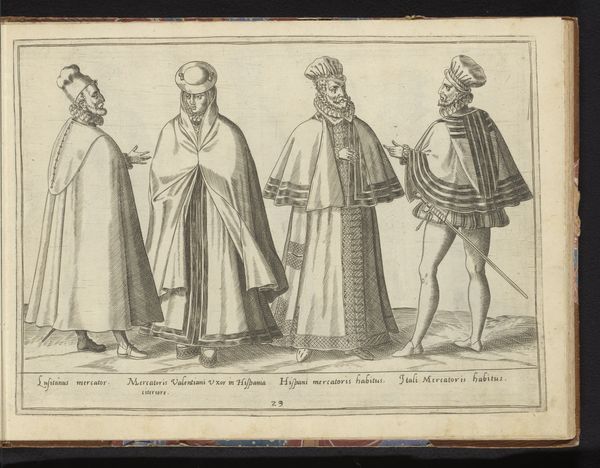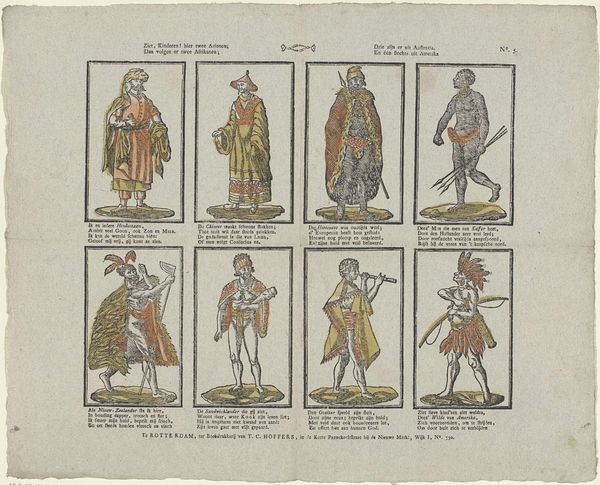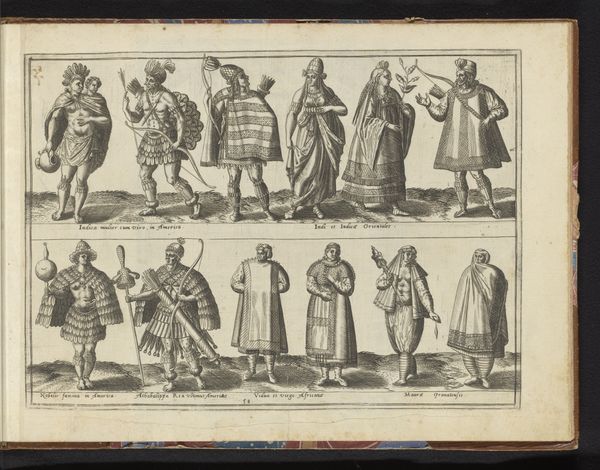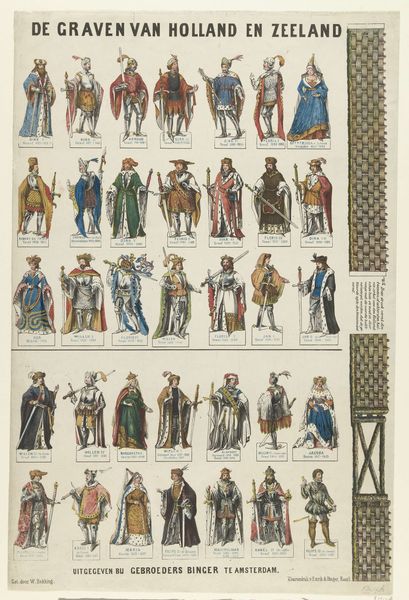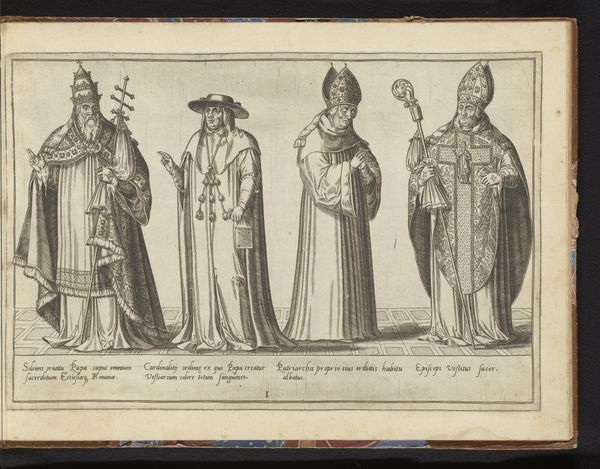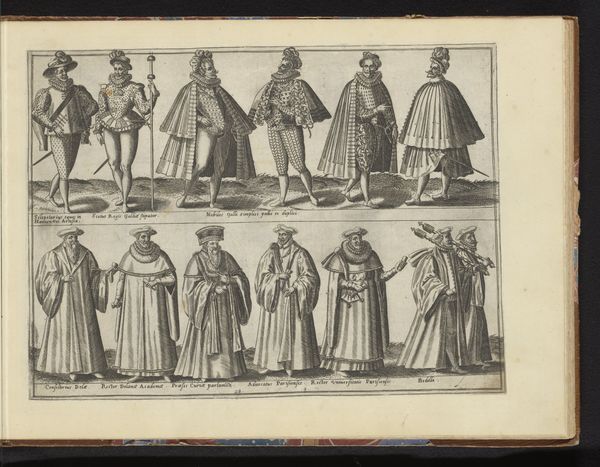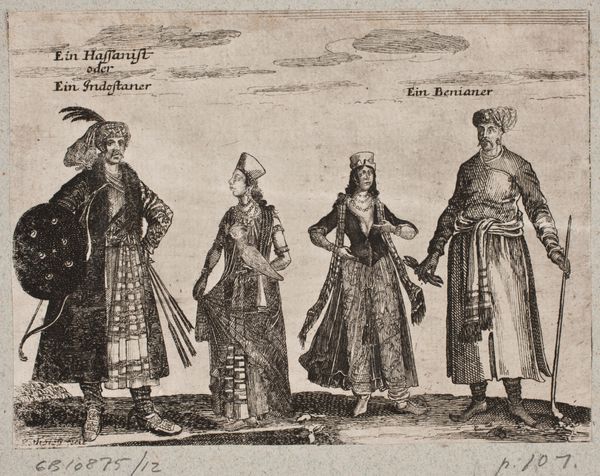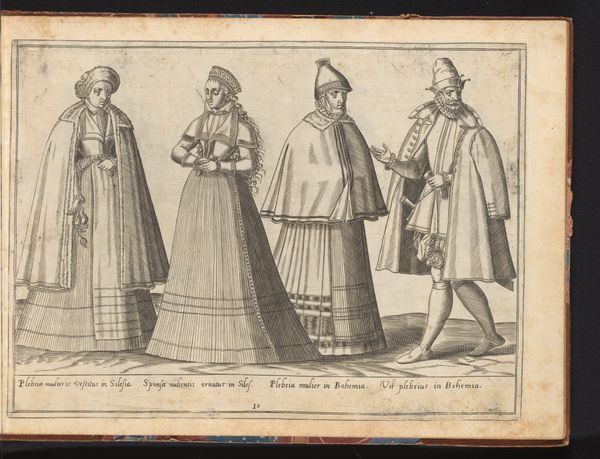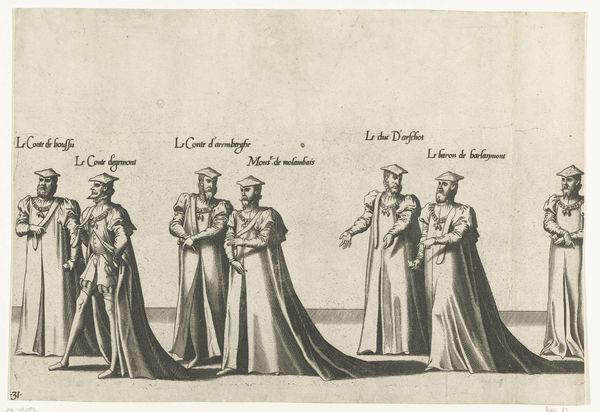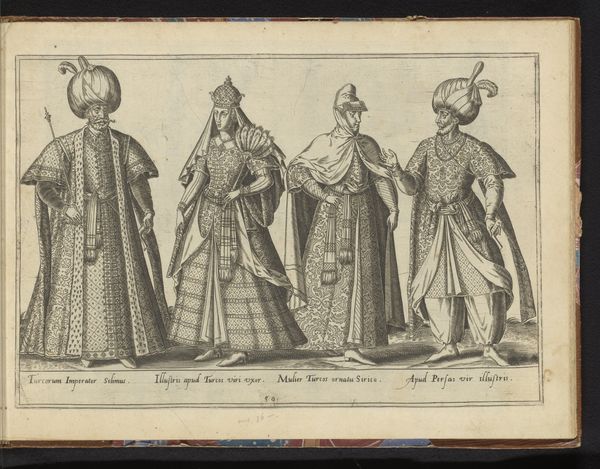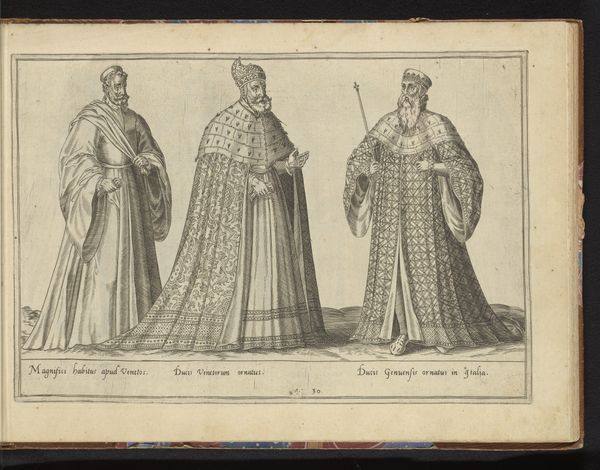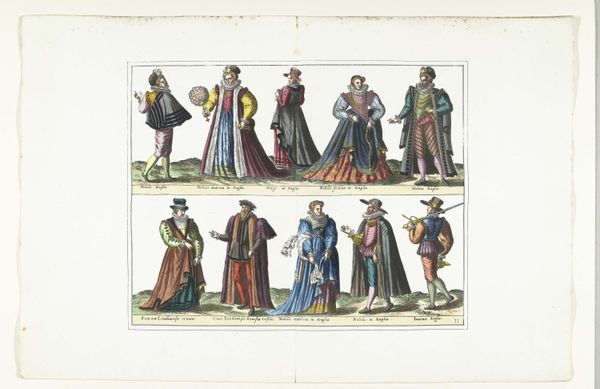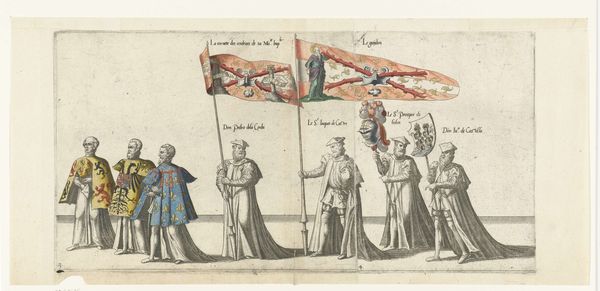
Kleding van verschillende standen volgens de Franse mode rond 1580 1581
0:00
0:00
print, engraving
#
portrait
# print
#
traditional media
#
mannerism
#
historical fashion
#
traditional dress
#
genre-painting
#
history-painting
#
engraving
Dimensions: height 214 mm, width 295 mm
Copyright: Rijks Museum: Open Domain
Curator: Oh, look at this. It’s entitled *Kleding van verschillende standen volgens de Franse mode rond 1580*, or "clothing of various classes according to French fashion around 1580." Abraham de Bruyn created this print in 1581. What catches your eye immediately? Editor: All that linen! Or lace maybe. Every collar, every wrist seems to explode with it. Such incredible excess. It’s both fascinating and… suffocating. Curator: Precisely! De Bruyn is giving us a visual guide, showcasing the strict social hierarchies through dress. The print originally served almost like a public service announcement, revealing which fabrics, colors, and styles were appropriate for each social standing. It’s a kind of regulation of taste. Editor: So, it’s about keeping everyone in their sartorial place, literally. Look at the posture of those higher-ups! Are those codpieces I see on the top row? There’s a deliberate arrogance there that is only supported by the expense and, indeed, flamboyance of those outfits. And down below we have the burghers, sober-sided, be-robed. A sharp, almost brutal distinction. Curator: Exactly! Mannerism, as you see, amplifies these contrasts. What's particularly fascinating is how clothing became not merely decorative but a potent form of social signaling. The ruffs, for instance, their size indicated wealth because maintaining such pristine white linen was an obvious indicator of means and access to skilled launderers! Editor: I imagine the laundress had enormous social power at that time! This reminds me of sumptuary laws from the Middle Ages. Isn't it interesting how fashion became another way for the elite to demarcate itself? A shifting landscape of who could wear what, constantly creating new barriers to entry. Curator: And, you know, Abraham de Bruyn made quite a living out of documenting this phenomenon. He wasn’t just reflecting fashion; he was participating in the enforcement of it. Imagine trying to keep up! It sounds exhausting. Editor: Well, it still feels a little bit exhausting. But thank goodness we no longer rely so much on the "dress code" in this day and age to label and contain one another. I feel rather liberated and somewhat relieved. Curator: Yes, let's appreciate how clothing evolves along with culture. Perhaps even now, as an artist, one considers fashion as an evolution within society. What do you think?
Comments
No comments
Be the first to comment and join the conversation on the ultimate creative platform.
